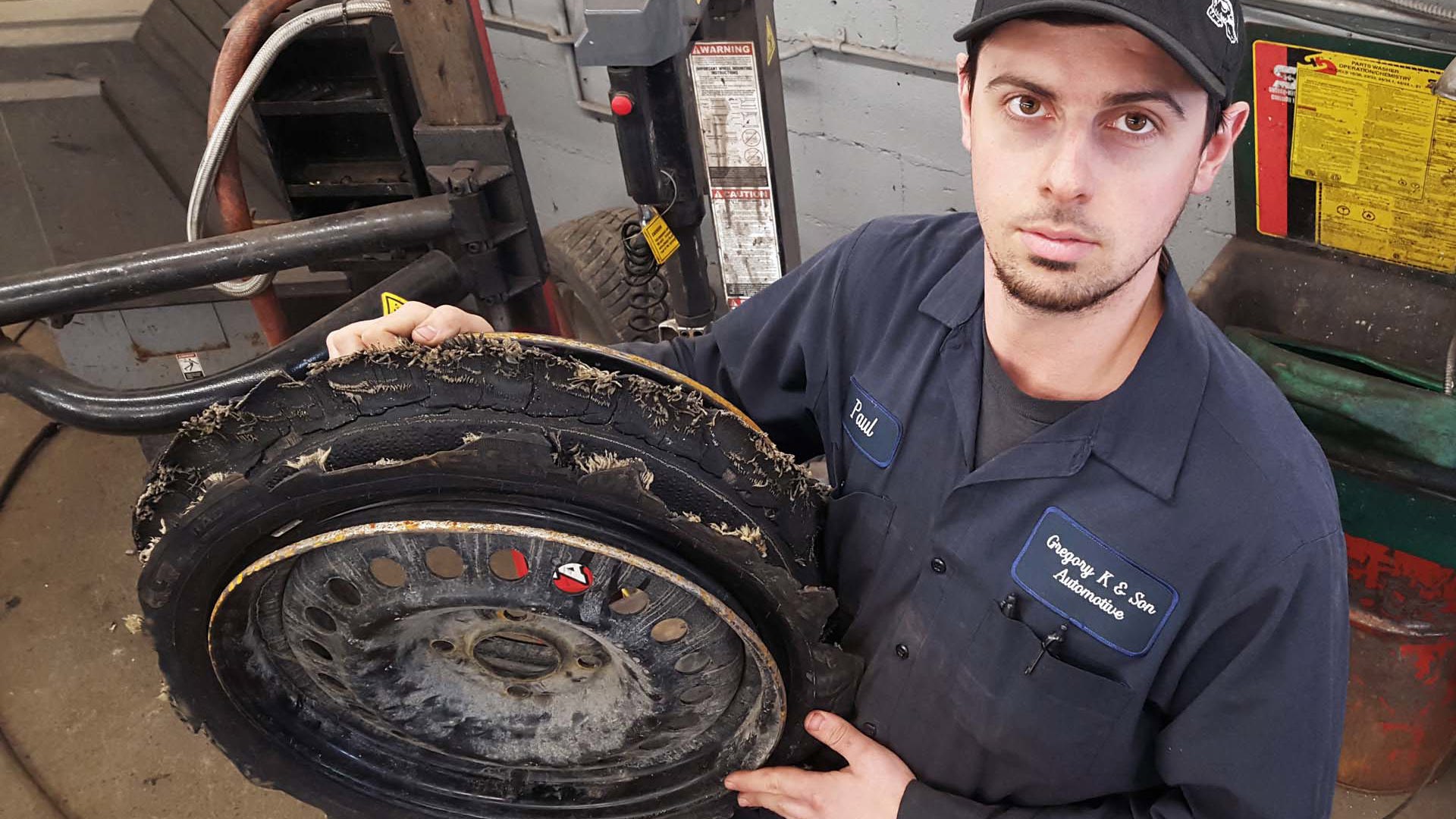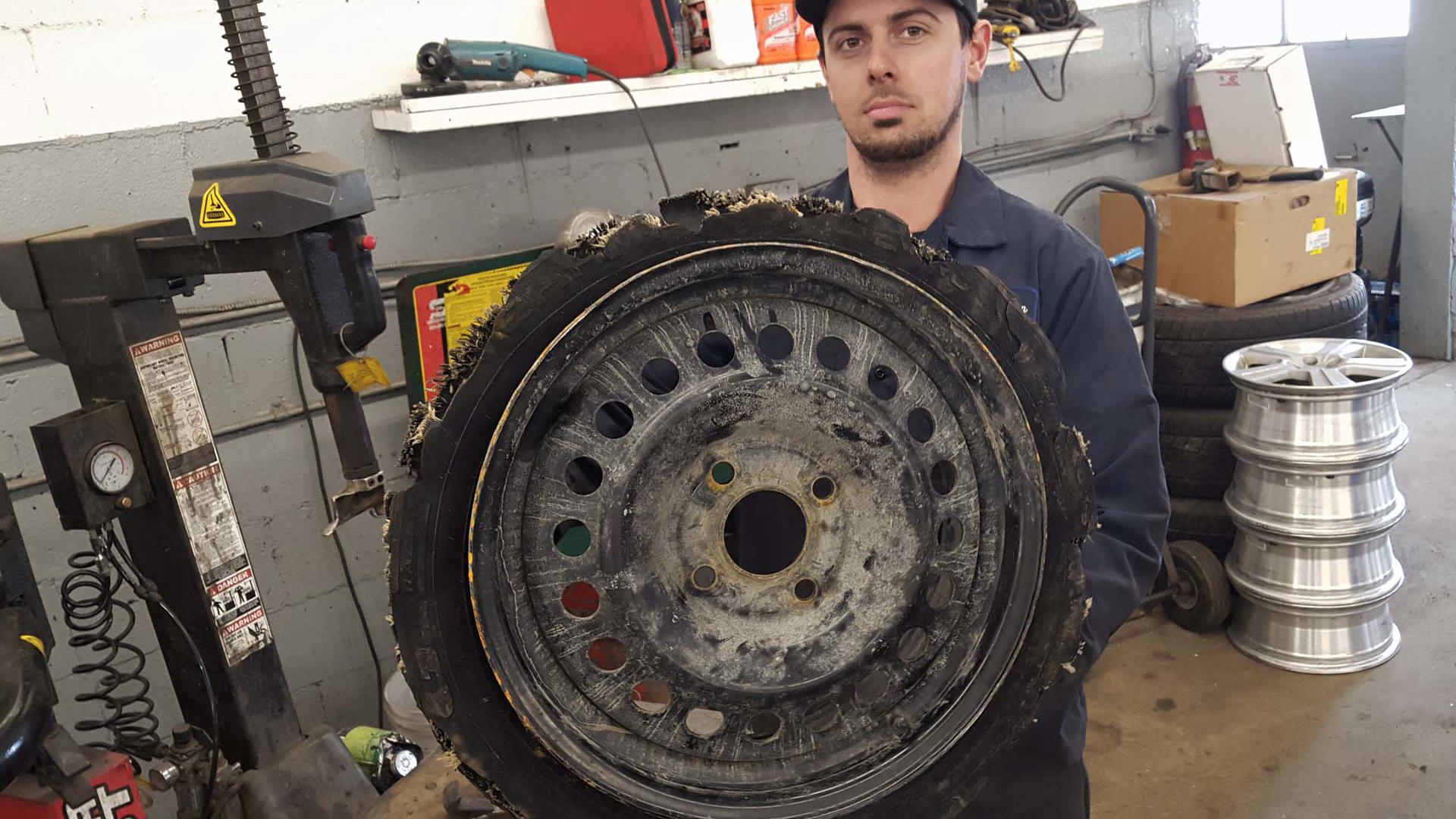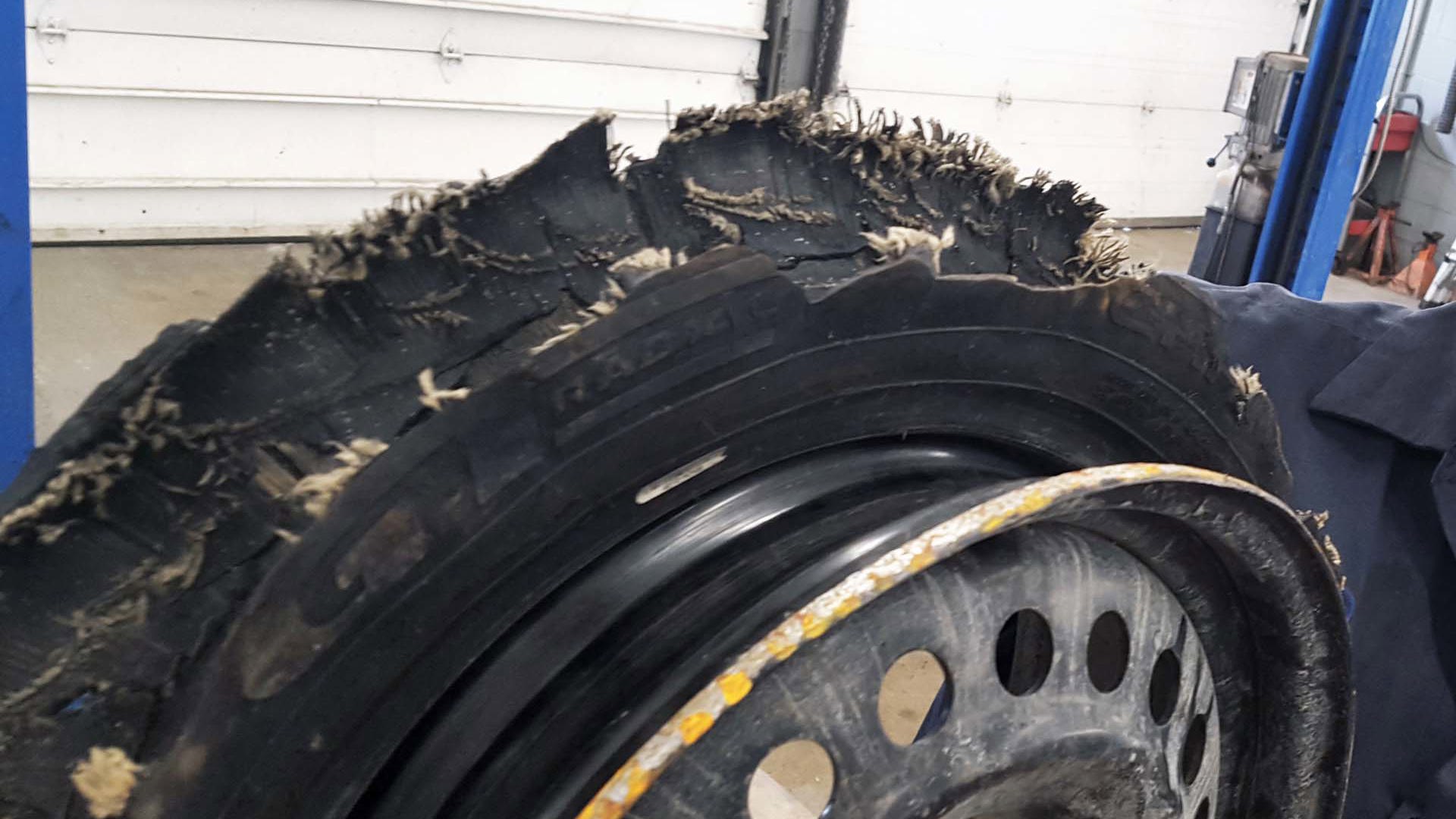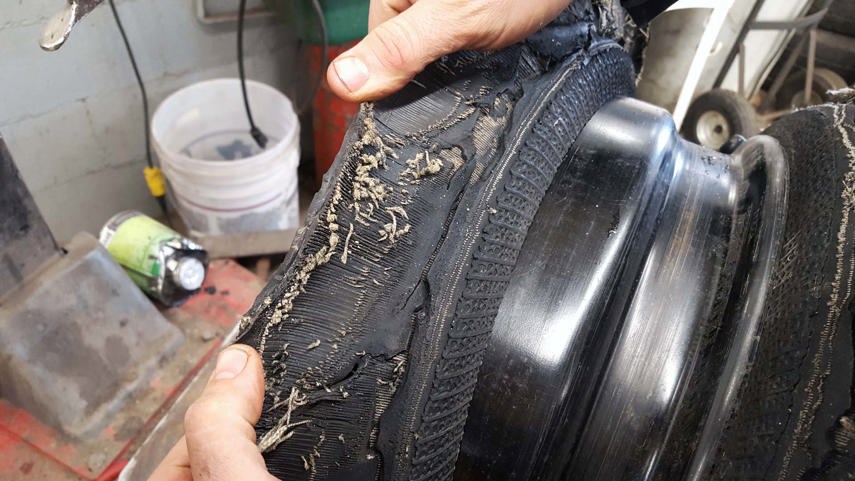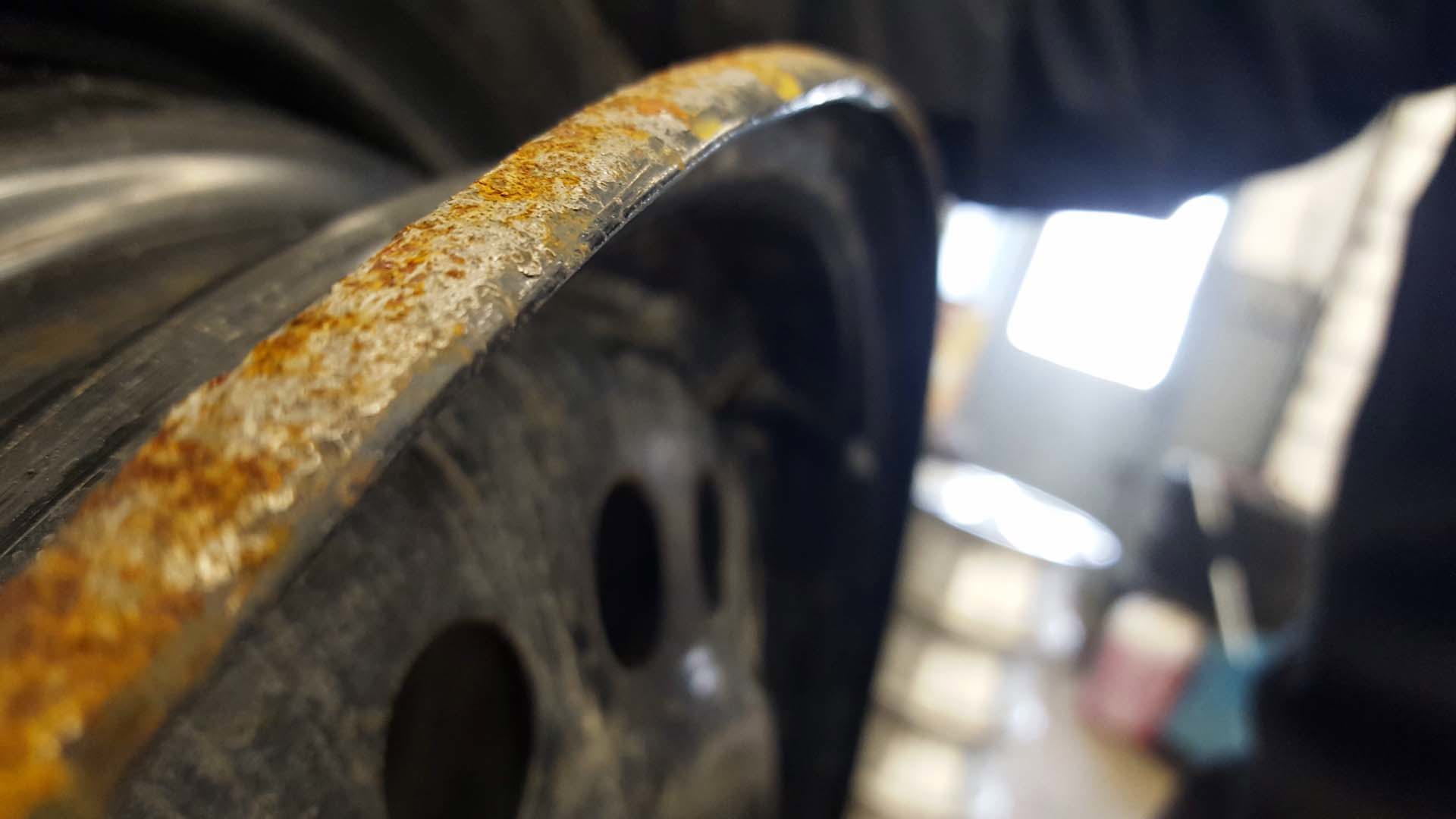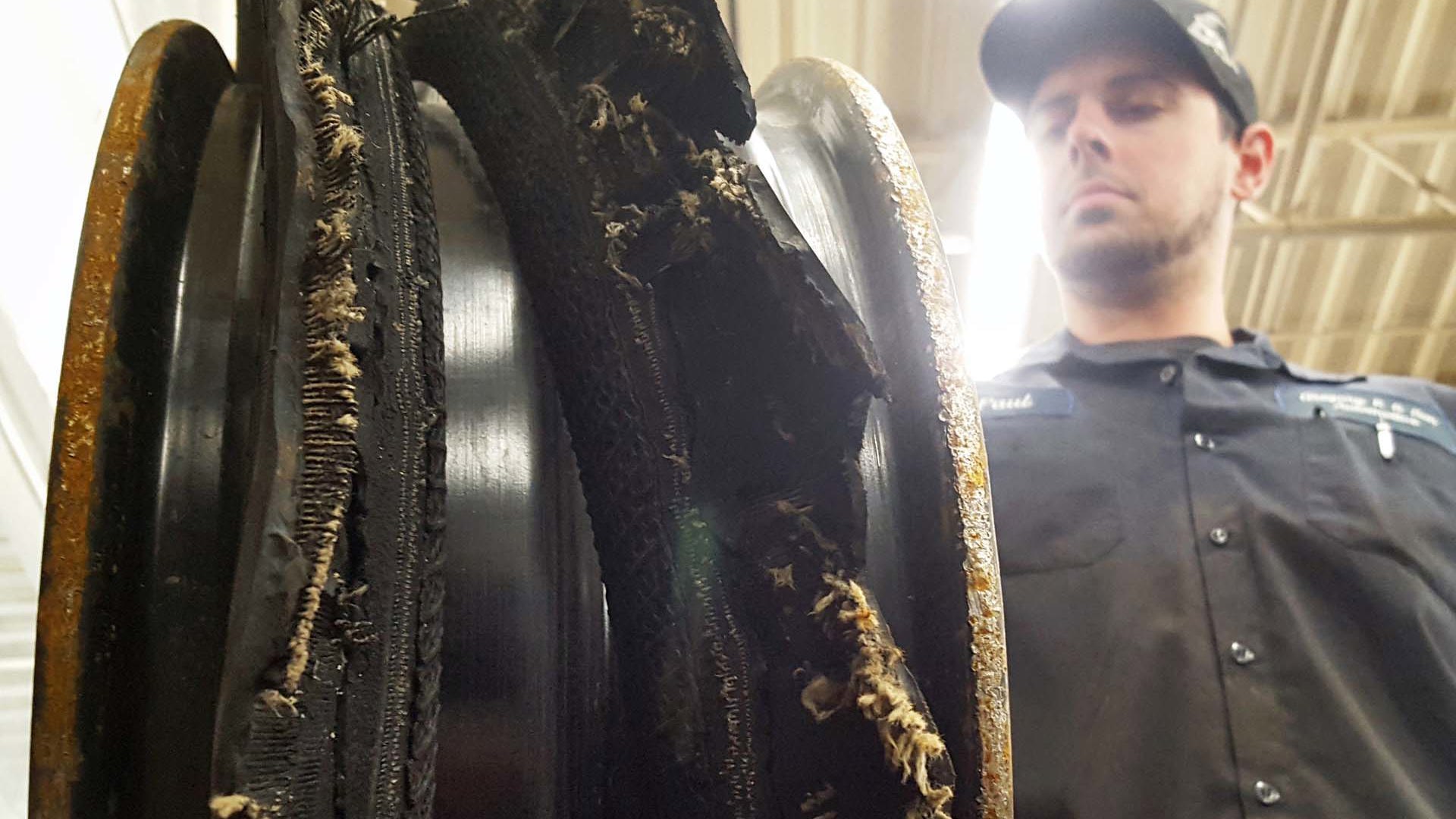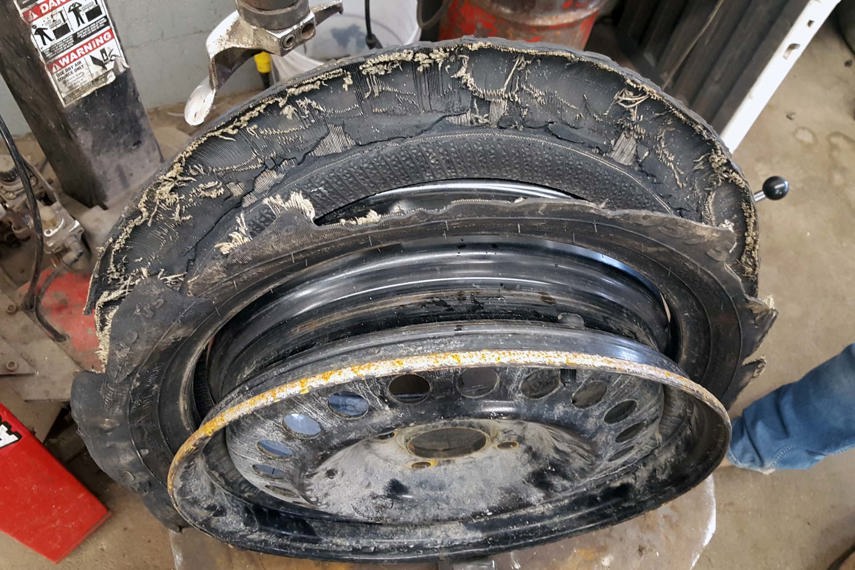Welcome to Goof of the Month! Every month, we ask for stories from our mechanic pals which highlight the need to understand one’s vehicle, how to maintain it, and how it works.
This month’s very-scary story comes to us from Sudbury, Ontario mechanic Paul Kennaley, and stresses the importance of a pre-drive circle check of your ride, as well as the importance of being aware of what sounds and sensations are normal, and which ones aren’t, as you drive around.
In this month’s instalment, the subject of our story failed to notice a very serious safety problem with their ride in a timely manner, drove for nearly a dozen kilometres at extreme risk of an accident, and luckily, didn’t hurt themselves or someone else. This is a scary story.
The Complaint
Kennaley reports that a customer vehicle arrived on a flat-bed after the customer called from a parking lot, complaining that the vehicle sounded and felt odd. Upon the vehicle’s arrival, Kennaley went outside for a closer look, and the problem was apparent straight away: the customer’s front passenger-side wheel and tire were destroyed. The wheel was worn down from driving on pavement with no tire around it, and the tire was reduced to some shredded remnants somewhat attached to the wheel-rim. The underlying issue was catastrophic tire failure, and the tire was shredded to ribbons.
The Mechanic
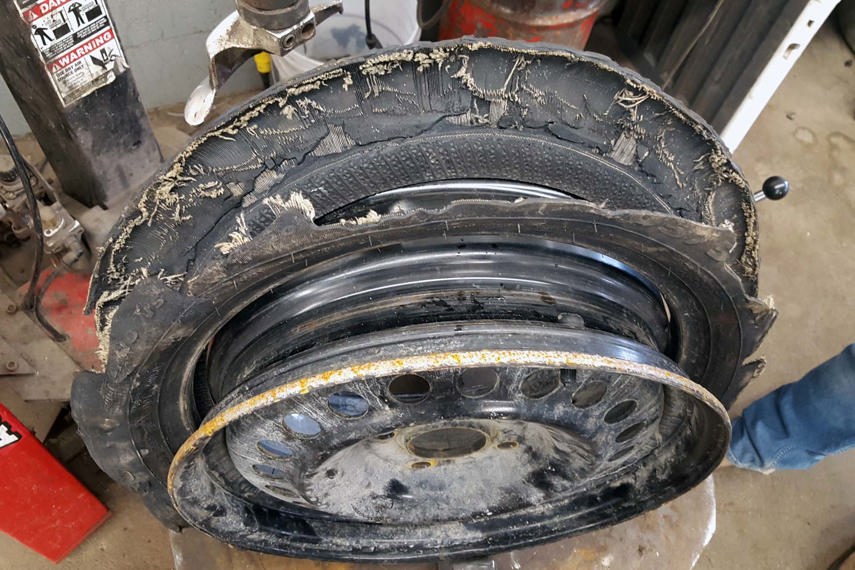
Kennaley says he gasped when he saw the tire and wheel, and laughed bit, nervously, when he said, “Well, there’s your problem.”
“We determined that this tire was flat before the car left the driveway that morning. Maybe it had picked up a screw, or something. In any case, when the vehicle set off that morning, this tire was already flat. Then, the driver travelled around town for a while before deciding to pull over and investigate.”
A flat tire is a serious safety problem that can easily result in a loss of control, an accident, injuries, or worse. Driving on a flat tire results in several clues, or warning signs, that something is wrong – and that’s whether the vehicle has a Tire Pressure Monitoring System (TPMS) or not. Usually, these signs are fairly apparent to the driver, but not always.
“I was amazed,” Kennaley said. “If your tire is flat, you’d feel, or hear, several warning signs that something is wrong. Your steering would feel soft, or may be pulling to one side. You’d likely hear a groaning or rubbing sound. It would be hard to keep your vehicle at a certain speed. The car would even ride strangely. Any of these is a sure sign that something’s wrong, and that you need to pull over.”
This customer didn’t initially take heed of the warning signs, choosing instead to continue driving for approximately 10 kilometres before the noise became even louder, and caused additional concern. Ten kilometres is a lot of driving on a flat tire, and was the cause of the extensive damage.
The Outcome
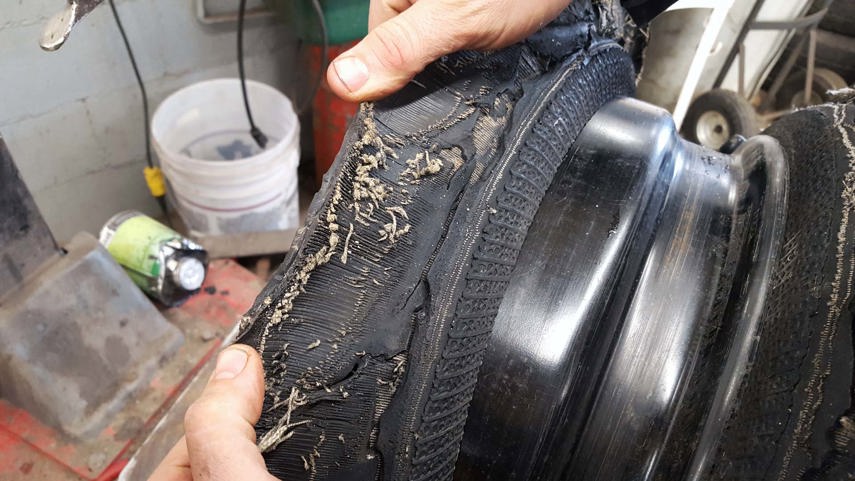
The customer wound up leaving the shop with a new wheel and tire, and was lucky to have avoided an accident, or other related damage. Kennaley mentions that this customer had recently had new tires installed at his shop, so replacing just one tire, in this case, was appropriate.
Lesson Learned
According to Kennaley, this customer found a new respect for the importance of doing a circle-check before hitting the road. “You can see so many potential problems with your ride in just a few seconds, if you walk around it. In this case, the customer would have noticed the flat tire, and we may have even been able to repair it, which is much less expensive than a new wheel and tire.”
Ultimately, the customer did the right thing by pulling over and investigating when an unusual sound got even worse, though a circle check, or pulling over at the first sign of a problem, would have been the best course of action.
